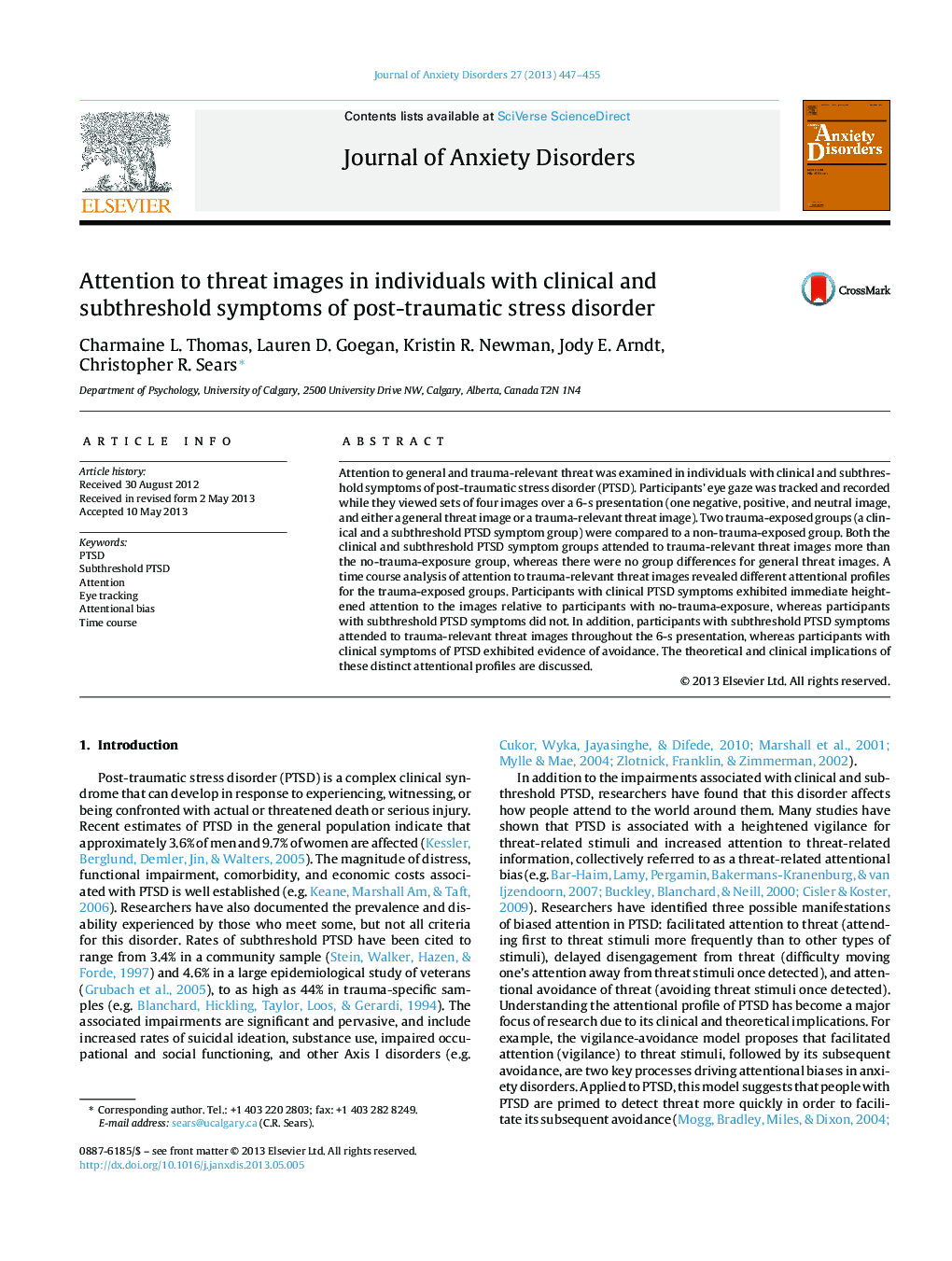| Article ID | Journal | Published Year | Pages | File Type |
|---|---|---|---|---|
| 10447628 | Journal of Anxiety Disorders | 2013 | 9 Pages |
Abstract
Attention to general and trauma-relevant threat was examined in individuals with clinical and subthreshold symptoms of post-traumatic stress disorder (PTSD). Participants' eye gaze was tracked and recorded while they viewed sets of four images over a 6-s presentation (one negative, positive, and neutral image, and either a general threat image or a trauma-relevant threat image). Two trauma-exposed groups (a clinical and a subthreshold PTSD symptom group) were compared to a non-trauma-exposed group. Both the clinical and subthreshold PTSD symptom groups attended to trauma-relevant threat images more than the no-trauma-exposure group, whereas there were no group differences for general threat images. A time course analysis of attention to trauma-relevant threat images revealed different attentional profiles for the trauma-exposed groups. Participants with clinical PTSD symptoms exhibited immediate heightened attention to the images relative to participants with no-trauma-exposure, whereas participants with subthreshold PTSD symptoms did not. In addition, participants with subthreshold PTSD symptoms attended to trauma-relevant threat images throughout the 6-s presentation, whereas participants with clinical symptoms of PTSD exhibited evidence of avoidance. The theoretical and clinical implications of these distinct attentional profiles are discussed.
Related Topics
Health Sciences
Medicine and Dentistry
Psychiatry and Mental Health
Authors
Charmaine L. Thomas, Lauren D. Goegan, Kristin R. Newman, Jody E. Arndt, Christopher R. Sears,
